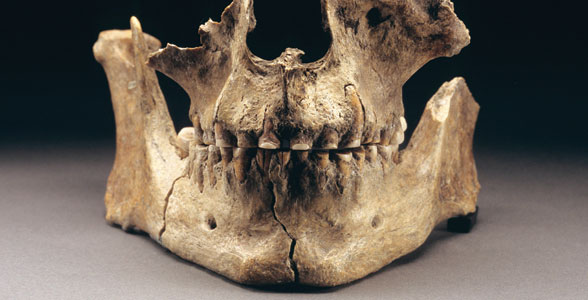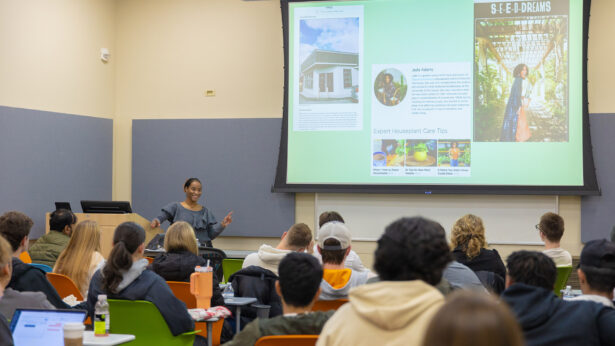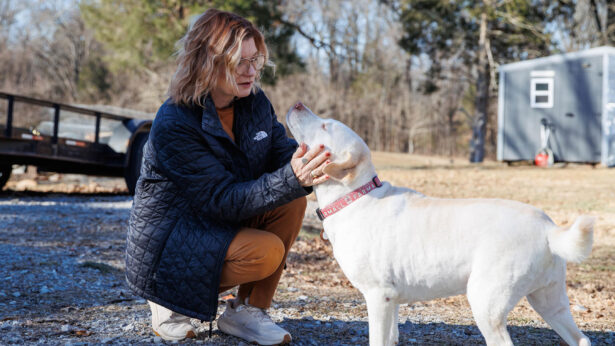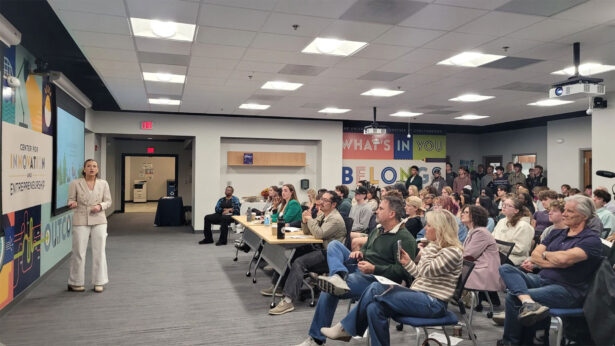Is Kennewick Man a Native American whose sacrosanct skeleton should be discreetly reburied? Or are his bones key evidence that should be preserved and studied for further insight about how North Americans lived more than 9,000 years ago?
Those questions were at the heart of a legal battle that raged for almost 9 years before the federal courts ruled in favor of the researchers who wished to study the bones. In 1996, eight scientists sued to gain access to Kennewick Man. Among them were Dr. Doug Owsley, a University of Tennessee alumnus and head of physical anthropology at the Smithsonian Institution, and UT anthropology professor Richard Jantz, director of the Forensic Anthropology Center, which includes the decomposition study facility known as the Body Farm.
The discovery of Kennewick Man and the debate about his fate were the subject of documentary films, many Web sites, and a cover story in Time. Finally–in the last 18 months–with the legal issues resolved, both Owsley and Jantz have examined the now-famous remains. And by trying to decipher the secrets that Kennewick Man holds, they’ve had a rare opportunity to look into the ancient past for missing pieces of human history.
History Unearthed
A pair of spectators at a hydroplane race on Washington State’s Columbia River stumbled across Kennewick Man in July 1996. The two men were wading about 10 feet from the bank when one of them hit a round object with his foot. He pulled it from the water and was surprised to find himself looking at a skull. The men hid the skull until after the race, when they flagged down a police patrol who cordoned off the area, searched it, and found most of the pieces of the skeleton scattered along the riverbank or in the water near it. Studies soon determined the skeleton was 9,200 years old.
Within a month of Kennewick Man’s discovery, controversy had erupted between Native Americans and anthropologists. Several tribes claimed Kennewick Man as one of their own, some referring to him as “grandfather”; they wanted to give him a proper burial. Meanwhile, anthropologists argued that the skeleton–which is better preserved than almost any other ancient bones available to scientists–was a treasure chest of knowledge.
“The engineers on whose land it was found almost immediately made arrangements to turn it over to the local tribes without anyone having seen or examined it,” Jantz says. The scientists were adamantly against the burial of the bones, saying the skeleton had little or no relation to any modern-day tribes. “The chances that he has a connection with those tribes are remote,” says Jantz. “He certainly doesn’t look like any Native Americans in the area today.”
Owsley agreed. “The bones had very unusual features, and they were not of the type that had been found in that area.” In October 1996 Owsley and Jantz, along with six other scientists, filed suit in Portland, Oregon, to prohibit Kennewick Man’s burial and keep the bones available for study.
Science Triumphs
Seven years later, the court ruled in favor of the anthropologists. The next year, the 9th Circuit Court upheld that ruling, allowing Kennewick Man to remain in Seattle’s Burke Museum, where researchers could study his ancient bones.
Jantz says the court’s ruling clarified the federal Native American Graves Protection and Repatriation Act of 1990, making it clear that Kennewick Man doesn’t fall under it. “As things stand now, he won’t be given to the tribes,” he says, so now he, Owsley, and others can at last examine Kennewick Man to identify his origins and the role he played in this continent’s human history.
“We have had three study sessions so far,” Owsley says. The first real study, in 2005, attempted to figure out how the bones came to be where they were. The scientists concluded that Kennewick Man had been intentionally buried.
“He was on his back in extended position with his hands extended, palms down,” Owsley said. “By studying the stains on the bones and the mineral and algae growth, we could tell how he eroded out of the bank without anyone having seen him there.” Owsley said scientists then documented “different types of processes, such as animal scavenging and damage and various plant processes,” that had affected the skeleton.
A Life Recaptured
During the latest study session, in February 2006, scientists looked for specifics of Kennewick Man’s life. For example, they determined he was about 45 years old when he died. “This study dealt with health, injuries, activity patterns, muscular development, robustness, and geographic origins,” says Owsley. “About 25 scientists have studied the skeleton–the report of our findings will be very detailed.”
Joining Jantz during the two days he examined the skeleton was UT anthropology graduate student Kate Spradley, one of only a handful of grad students lucky enough to see Kennewick Man firsthand. The pair took measurements and did a CT scan of the skeleton. “What Dr. Jantz does, and what he has taught me to do, is to take three-dimensional data of the skull, and we’ll compare those measurements with [data from] other skeletons,” Spradley says.
Jantz says forensic anthropologists rely on bones for a great deal of information: “By looking at the chemical analysis of bones we can tell if he had a marine, aquatic, or terrestrial diet. We think Kennewick Man had a marine diet.”
Besides uncovering clues about Kennewick Man as an individual, researchers have been able to add to their knowledge of North American prehistory. “We’ve learned that his ancestors did not necessarily come by a land bridge, but probably came by boat,” Owsley says.
“How Little We Know”
Scientists have only one other partial skull from the area in which Kennewick Man was found, so the skeleton is very important. Jantz says Kennewick Man gives scientists a comparison for bones found in other areas of the United States. “These things are strung out all over the country. Each one represents a person that lived in a different environment,” he says. “We’re interested in regional variation. We suspect these people were not all part of one big homogeneous population. We expect there’s local differentiation.”
Only a handful of similarly ancient skeletons have been found in the U.S. “There are ten or so in the country, so one of them is ten percent of the historical record we have,” Jantz says. “We need to get our hands on as many of these things as we can.”
So who is Kennewick Man? He is a “historic event in anthropology and the study of skeletons,” Spradley says.
“Kennewick Man has shown scientists there’s still much to learn,” says Owsley. “Each bone, if you know how to read it, has something to tell. What we’ve discovered is how little we know and how far we have to go.”



